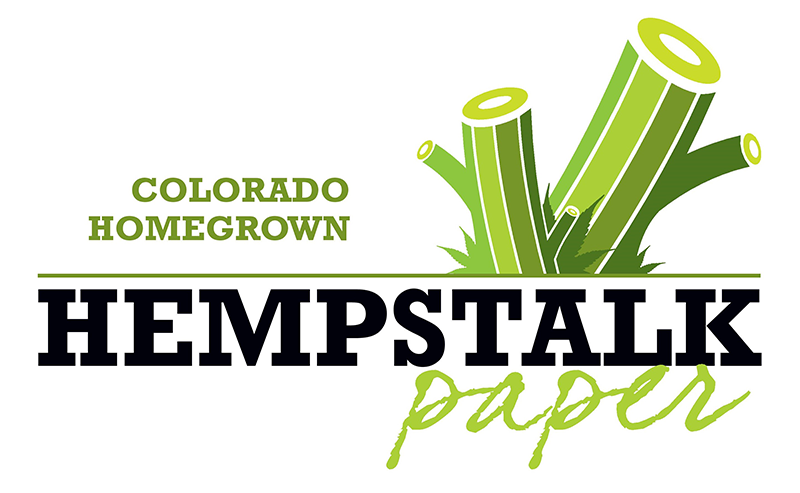
by: Thomas Ivory, Jr.
As the laser printer singes the first lines of the etching, Kevin Buecher studies the effect of the heat on the paper. He watches through a glass window into the table-size enclosed capsule where a small moving laser glides horizontally along a vertical moving arm. The cream white hemp paper inside is lightly burnt only where the high-powered laser has been programmed to direct heat. Light brown wording, and then slowly an image, appears as the laser cascades down the paper.
“Exploring laser printing onto hemp paper,” said Buecher, Tree Free Hemp, “gets some really beautiful outputs.”
This particular paper he is etching is the first of its kind: Colorado-grown, processed, and manufactured. (Sterling, Fort Lupton, and Boulder, CO, respectively.) The hemp stalks were separated into pulp, lignin, and sugars; and the paper is a blend of hurd and fibers mixed with locally sourced recycled post-industrial.
According to the Artisan Hemp website: “As a material for paper making, hemp is superior – the fibers are very high in cellulose, making them strong and durable; and low in lignin, making it easier to process into pulp without toxic acidic chemicals.”
2000 sheets were produced for this first all-Colorado handmade small batch of 14×19 size pages. Tree Free Hemp incorporates the domestic supply of what is available on the market to create new and original products. This first go around brought PureHemp Technology and their counter-current reactor technology into the fold as PureHemp Pulp was used to create the first ever batch of Colorado HomeGrown HempStalk Paper.
Soon expanding from collector prints into industrial paper markets (like commercial print rolls and master cartons, board stock for packaging, paper towels, toilet paper, etc.), “We’re looking at changing the supply from Canada to domestic,” said Morris Beegle, founder of Tree Free Hemp. “Right now, we’re a specialty printer and artist driven focusing on hemp paper.”
Back at the Loveland Creator Space, Buecher checks his laptop configurations and dials in the laser printer to a slightly higher temperature. The laser is literally burning the etching into the paper, and too high of heat would burn right threw. That is, unless that is the desired outcome.
He earlier tested the power of the laser (and the strength of the paper) by cutting out a design – a cannabis leaf. He put a small hole in the top and called it a Christmas tree ornament.
As for these prints, “Each one is unique,” said Buecher, holding up the first sheet to the shop lights. Some words are lightly burnt, while areas of the image – a man in overalls raising his arm – are darker brown. The shop lights warm the various burnt-depths in the paper.
“Kevin is all about the paper and doing cool stuff,” said Beegle over the phone. “He goes off into these other areas, goes off the path,‘Into the Trees,’ as we like to say. And who knows where that might lead.”
In the shop, the laser printer rests in standby, and Buecher retrieves the paper from the machine. The image on the sheet is a man thrusting a leafy hemp stalk over his head, with the words: “This is my BoomStalk!”
“Paper is really just the start,” said Buecher, using magnets in the printer to secure the next blank sheet. “We’re exploring all the artistic connections we can do.”


